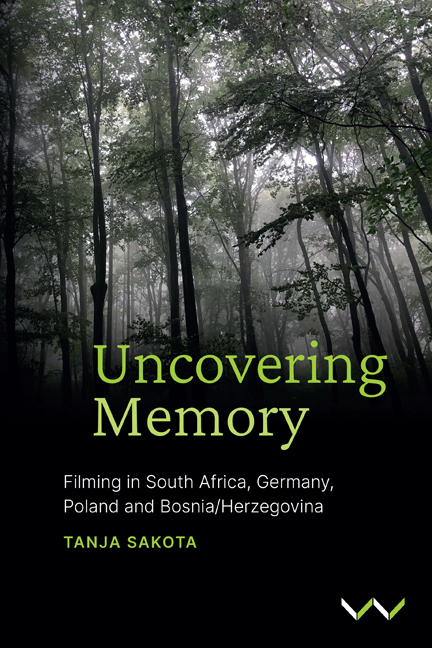Book contents
- Frontmatter
- Dedication
- Contents
- List of Images
- Foreword
- Acknowledgements
- Map of Africa and Europe
- Practice-Based Research, Teaching and Learning
- Part I Working With Students: Cape Town, Johannesburg, Berlin
- Part II Working With Peers: Constitution Hill, Johannesburg
- Part III Working With Myself: Poland, Germany, Bosnia/Herzegovina, South Africa
- Moving Forward
- Film Credits
- Glossary of Terms
- Notes
- Bibliography
- Index
Chapter 14 - Understanding personal, political and cultural memory
Published online by Cambridge University Press: 24 November 2023
- Frontmatter
- Dedication
- Contents
- List of Images
- Foreword
- Acknowledgements
- Map of Africa and Europe
- Practice-Based Research, Teaching and Learning
- Part I Working With Students: Cape Town, Johannesburg, Berlin
- Part II Working With Peers: Constitution Hill, Johannesburg
- Part III Working With Myself: Poland, Germany, Bosnia/Herzegovina, South Africa
- Moving Forward
- Film Credits
- Glossary of Terms
- Notes
- Bibliography
- Index
Summary
Constitution Hill makes use of numerous forms in terms of memory construction. The designers intended it to be a redemptive site but the space of injustice and brutality is so overwhelming and so present that the redemptive qualities are overshadowed. Constitution Hill is a building, a memorial and on many levels a counter-monument because it obliges us to engage with the past. As we navigate the space we start to ‘remember’ events that we have not experienced. These thoughts are then cultivated and processed on an individual level and the films emerge as a combined interpretation of those cultivated interpretations. What starts to happen is that the personal experience of an individual becomes part of that interpretative process. As my research develops, I realise that personal history and autoethnography become increasingly relevant when considering memories that are not our own. Our reading and understanding of events centres on our own veracity and authenticity as well as the relationship we have with the world and memory sites. To understand how memory functions within a particular personal, political or cultural framework, it is important to examine the mechanisms within which they function.
These are referred to as technologies of memory, which can be described as the vehicles or channels of memory that allow for an individual, ideological or aesthetic interpretation. They could take the form of an object, memorial, monument, ritual, artefact, street or building. Marita Sturken (2008, 75) says that ‘technologies of memory, while they might include memorials, souvenirs, bodies and other objects, are increasingly visual technologies of mass and mediated forms – photographs, films, television shows and digital images’. How they are consumed, interpreted, challenged or reimagined becomes part of an organic process that is in a constant state of change. These processes form the threads that weave the fabric of memory and to understand them one must deliberate how memory emerges in the construction of memory sites and through the technologies/vehicles that frame them. The films become technologies of memory that reflect a combined experiential interpretation of Number Four and its surrounding area.
For those of you who are sociologists, you are most probably probing a discussion on collective memory, which is not history but rather ‘a collective phenomenon which manifests itself in the actions and statements of individuals’ (Kansteiner 2002, 180).
- Type
- Chapter
- Information
- Uncovering MemoryFilming in South Africa, Germany, Poland and Bosnia/Herzegovina, pp. 187 - 196Publisher: Wits University PressPrint publication year: 2023



